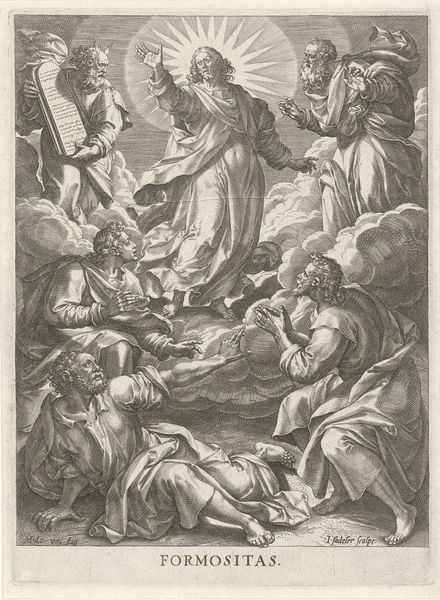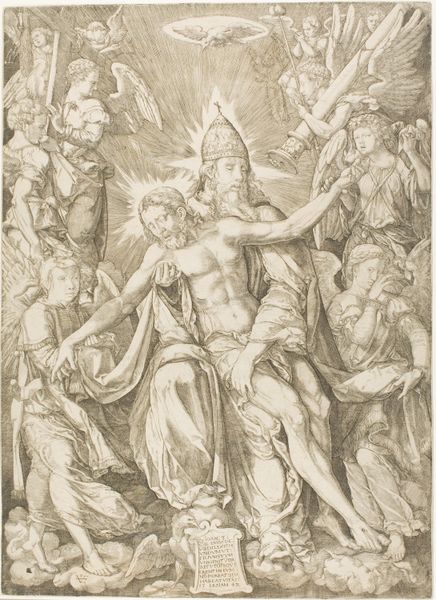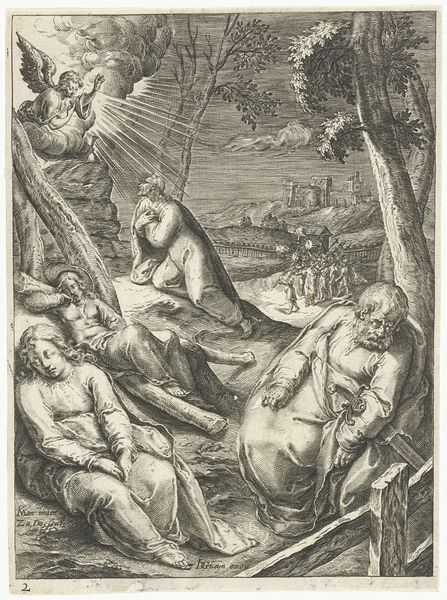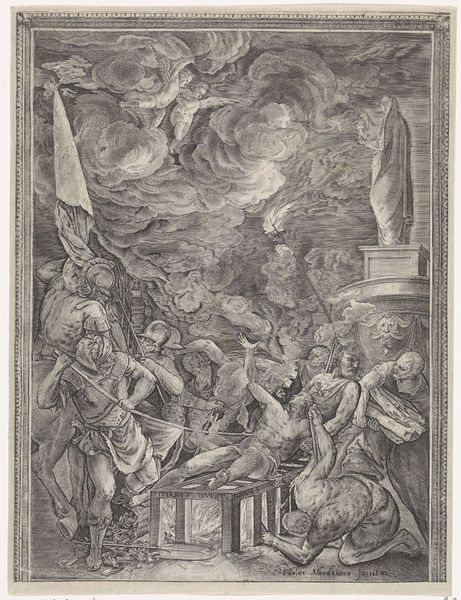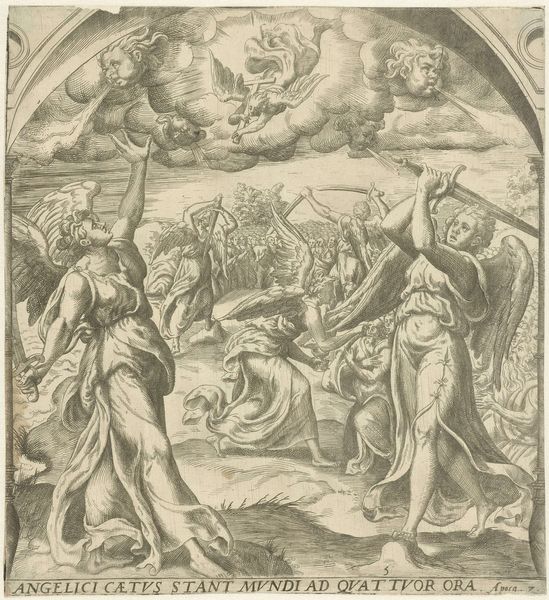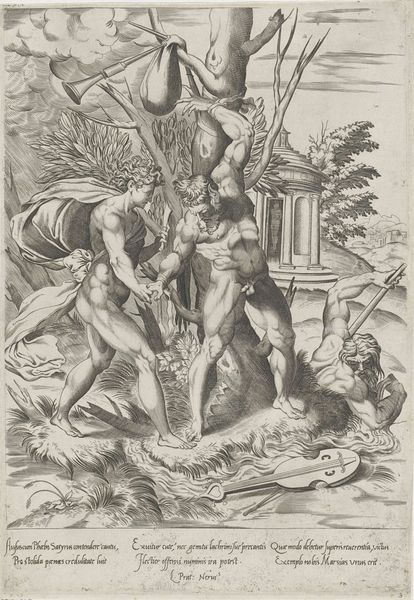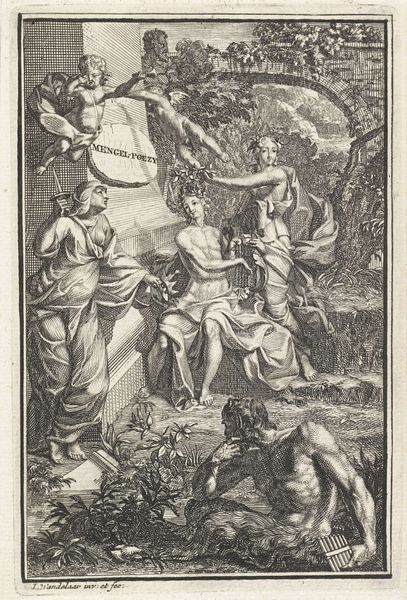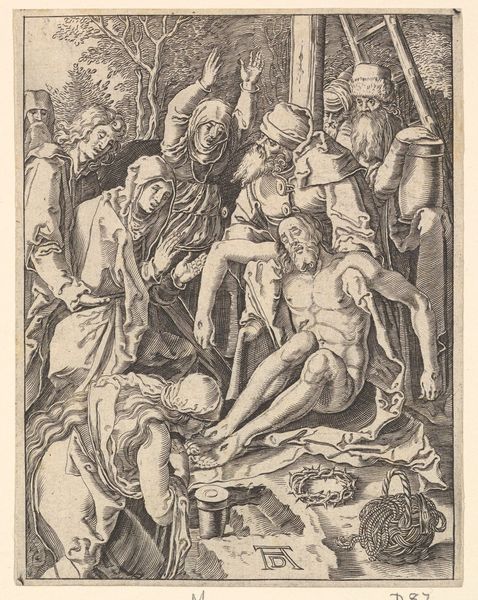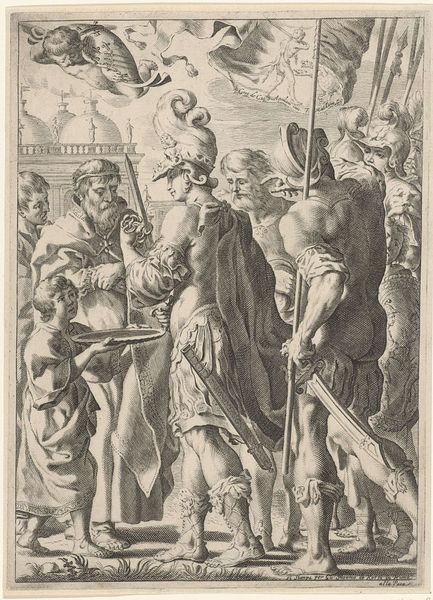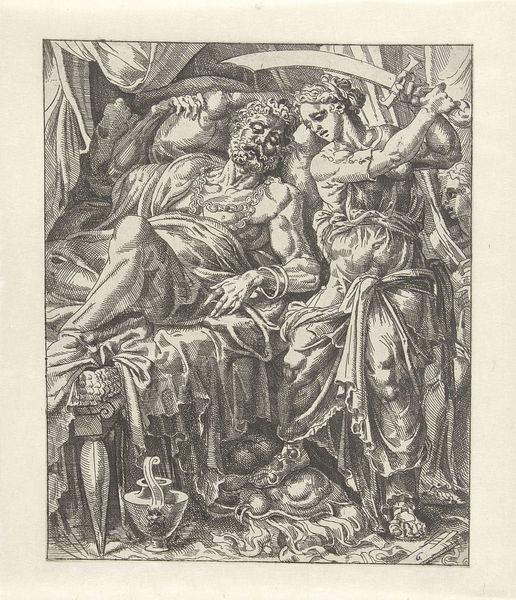
print, engraving
#
pen drawing
# print
#
old engraving style
#
figuration
#
11_renaissance
#
line
#
history-painting
#
northern-renaissance
#
engraving
Dimensions: height 268 mm, width 192 mm
Copyright: Rijks Museum: Open Domain
Editor: Here we have Johann Sadeler I's engraving, "The Holy Trinity," dating back to somewhere between 1560 and 1600. It's an intense piece, quite visually dense, depicting the Trinity with these incredibly muscular figures. It almost feels theatrical. What jumps out at you, and how do you interpret this work in its historical context? Curator: The muscularity, as you point out, is certainly striking. Remember the Mannerist movement was peaking then; an exaggerated figuration showcasing skill was important, and printing allowed for widespread dissemination of artistic ideas. The politics of religious imagery were highly charged in this period. Where was this print circulated, and who was its intended audience? Understanding the patronage and intended viewing context tells us about the purpose and reception of such an image. Editor: That’s interesting. Given the religious upheaval of the Reformation, I guess such a bold depiction of the Trinity could be making a specific statement, but I'm unsure of which one. It also brings up how the patronage of these artists may have been a huge influencer on their works. Curator: Exactly! Religious imagery served very different purposes depending on where and for whom it was made. An engraving like this could function as a tool of persuasion. How might a depiction like this, so physically present, address the anxieties and spiritual debates of the time? Remember, the Renaissance isn’t just about art; it is about power. Editor: So the way the artwork’s been framed and its place in society has clearly informed its making and can provide a message in ways that, from just viewing, isn’t very obvious. It helps put all these art pieces into perspective by observing them within their original circumstances. Curator: Precisely. By considering the societal conditions of artistic creation, the art comes alive in a much deeper form.
Comments
No comments
Be the first to comment and join the conversation on the ultimate creative platform.
